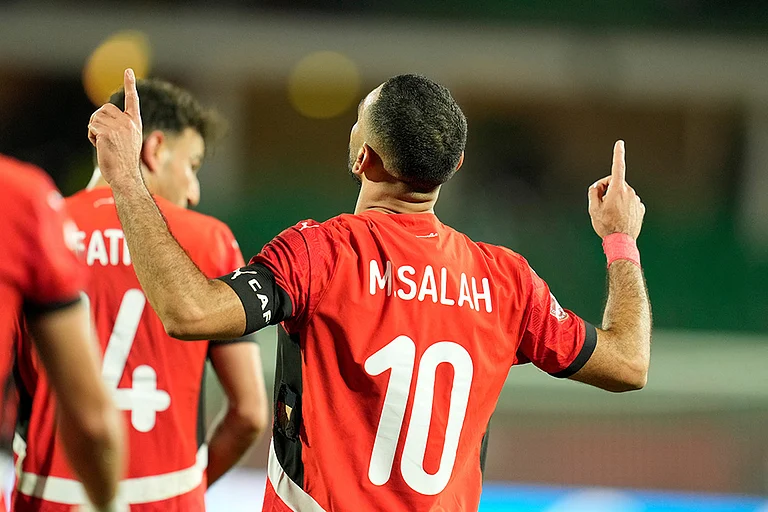In June 2020, India was ‘surprised’ by China’s military actions across the contested Line of Actual Control (LAC) in Ladakh. Lives were lost on both sides. The strained bilateral relationship took another beating and a tense military stand-off ensued. The tactical situation is unresolved and remains brittle a year later, and this is an opportune moment to review the chequered trajectory of Sino-Indian relations since the heady period of the 1950s.
This was the decade when both Asian giants had thrown off the colonial yoke—India in 1947 and China in 1949—and the aspiration in Delhi was to forge pan-Asian solidarity. This was symbolised in the popular phrase, ‘Hindi-Chini bhai-bhai’, but it soon became evident that China under Chairman Mao had a very different vision of Asian consolidation and Beijing’s place in the emerging strategic framework. Clearly, Delhi with Prime Minister Jawaharlal Nehru at the helm had not read the tea leaves as astutely. Very soon the October 1962 territorial dispute erupted—leaving India ‘surprised’ and shocked at what was construed as brazen Chinese perfidy.
ALSO READ: Infernal Affairs
India was surprised and shocked again in 2020, and this pattern and the causal factors merit scrutiny in the larger context of the Indian security narrative. China is not the only adversary that has placed India on the reactive backfoot, for much the same sequence was evidenced in both Kargil in the summer of 1999 and the Mumbai terror attack of November 2008.
The inference that follows is that from 1962 to 2020, India’s higher defence management has not been able to acquire the necessary wherewithal by way of effective information-intelligence capacity and deterrent military capability to anticipate and prevent challenges to national sovereignty and territorial integrity. This characteristic acquires increased relevance in relation to China and the Galwan incident.
ALSO READ: Checkmate & Stalemate
Media reports earlier this year indicated that the strategic-security community in China had been deliberating upon India as a security challenge to Beijing’s long-term objectives and specific reference was made to a 2013 document—The Science of Military Strategy, published by the Academy of Military Sciences (AMS). This was the third iteration of a text first released in 1987 and revised in 2001. Interestingly (from a one-year-after-Galwan perch), it was reported that an English translation of the 276-page document was released in 2013 and is available in the public domain. This document was resurrected in February by a US think-tank and was in turn reported in India.

Security think-tanks and specialised academies studying the ‘adversary’ is par for the course and, the AMS apart, even the Chinese National Defence University issues similar reports. Given the HR investment China has made in studying India in a holistic manner, it is likely that many institutes and organisations would be similarly engaged.
ALSO READ: Plateau Of Bad Faith
What is instructive is that the 2013 report makes a recommendation for Beijing to stop India from “nibbling” at Chinese territory and also draws attention to India’s expanding maritime reach. The central question that arises a year after Galwan is whether the Indian higher defence management ecosystem with its many tentacles had taken note of these reports and, if so, how were these inputs processed.
ALSO READ: ‘This Apathy Breaks My Heart’
Galwan and its aftermath warrant a detailed review in much the manner that the Vajpayee government had constituted the Kargil Review Committee, headed by the late K. Subrahmanyam, which submitted its report in record time. A sanitised version of the Kargil report was also published in book form for public dissemination and remains an invaluable document for improving India’s higher defence management. Intelligence gathering and assessment was identified as a vital domain, but alas, 20 years after Kargil, many of the structural inadequacies remain unaddressed and Galwan testifies to this Indian penchant for reactive responses to national security challenges.
This draws attention to the question of the ‘gain-loss’ matrix for India and China after Galwan. Where have the two Asian giants moved in the intervening one year and what have been their respective pluses-minuses? Indian troops may have been initially ‘surprised’ tactically in the Ladakh area along the Pangong lake, but were able to retrieve some prestige and turn the tables on the Chinese PLA later in the Kailash heights. It is another story that Delhi was persuaded to barter this limited gain, ostensibly for a long-term settlement, but the PLA did not vacate the areas it was expected to—and an uneasy stalemate continues.
ALSO READ: ‘We’re Proud Of The Bihar Regiment’
While this would imply that the PLA was able to gain a tactical victory and alter the LAC in one sector in its favour, the strategic consequences for Beijing, to my mind, are negative. After the muscular assertiveness that China has demonstrated in relation to the South China Sea and trampled on the claims of different ASEAN states (Philippines and Malaysia being the latest), the military actions against India have served to consolidate the image of a belligerent China—a nation that acts like the regional bully who will take recourse to force with scant regard for international law and customary practice, and renege on bilateral agreements.
ALSO READ: Asymmetry Of Threat management
One may conjecture that the stalemate along the LAC and the stand-off between the troops on both sides will continue through the year, for there are many other issues on China’s radar. These include the relationship with the US, where the lines have been drawn and the Joe Biden team is yet to hold out the olive branch. Concurrently, Beijing needs to contain the protests in Hong Kong, even while keeping the lid on Sinkiang and ensuring that Taiwan does not rock the carefully orchestrated one-China template.
ALSO READ: Sharp Edge Of Realpolitik
For India, the Galwan incident may yet have a silver lining, if the strategic lessons are appropriately internalised by PM Narendra Modi and his closest advisers. The professionalism of the Indian military and the political prudence that Delhi has chosen have allowed for a lowering of the temperature along the LAC, but the loss of lives and the manner in which the PLA chose to negate the 1993 Jiang Zemin-Narasimha Rao agreement have ripped the veil off the make-believe about China that the Modi government was nurturing. The images of highly publicised summit meetings in Ahmedabad and Mamallapuram between PM Modi and President Xi Jinping, that seemed to suggest a bonhomie between the two nations, are now a thing of the past.
ALSO READ: The Falcon Has Landed
In a recent media interaction, external affairs minister S. Jaishankar noted: “I think the relationship is at a crossroads. And which direction we go depends on whether the Chinese side would adhere to the consensus, whether it would follow through on the agreements, which we both have done for so many decades. Because what is very clear in the last year is that border tensions cannot continue with, you know, cooperation in other areas.”
ALSO READ: China Shops In India Bazaar
The reality will be mixed, for the current pattern of global trade and investment may not allow for either side to totally sever ties with the other. Like PM Nehru after the 1962 debacle, PM Modi will have to confront the reality about China and its hegemonic ambitions, and resolve to progressively rebuild India’s comprehensive national capability and the well-being of its citizens against the ravages wrought by the Covid pandemic.
The lapses that led to Galwan have many lessons for India’s security apex and these should not be buried or whitewashed for reasons of short-term political expediency.
(The writer, a retired Commodore, is Director of the Society for Policy Studies. Views expressed are personal.)























